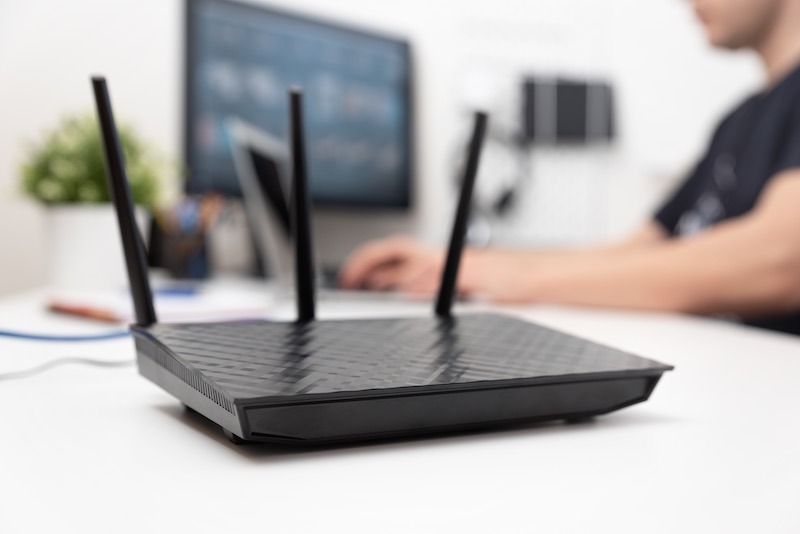
What is a Good Internet Speed for Home Office?
Table of Contents
More and more companies are allowing their employees to work from home long-term. That obviously involves having the right internet connection. But what is a good internet speed for home office?
Generally, if you work at home, you will want a minimum internet speed of 5Mbps for both downloads and upload if you are a light internet user and use fewer apps to work.
However, your type of work and other factors also determine what speed you need. Do you need to have a stable connection? What about Skype or Zoom meetings with a large group?
Read below to learn more about what to consider for your home internet needs.
Ideally, an internet speed of 100 to 1000 Mbps is considered excellent. This speed won’t generally give you disconnection problems and can handle 2 or 3 users who do streaming and video meetings.
A speed above 200 Mbps can handle more users faster. It is usually preferred by multiple users working in just one place.
However, as a user, you just don’t look at the speed. You also check factors that download speed and upload speed.
According to speedtest.net, a download and upload speed of 2 Mbps is good enough for those who only use email, social media, and audio conference calls on one device.

For those who upload and download large files, including photos and videos, and need to have daily video conferences, an average download speed of 10 Mbps is sufficient.
However, a download speed of 25 Mbps or higher is perfect for those who have multiple people working from home or those using streaming services all at the same time.
In urban areas where many rely on the internet for work, school, and play, about 25 Mbps is a basic and acceptable speed. Still, it increases depending on other things like using a fiber, which brings a faster and more secured connection.
Your wireless router may play a significant role as well in the speed of your internet connection. Old home routers can only stand basic speed. You may want to upgrade and check which suits your need.

The Recommended Internet Speed
Here is a breakdown of recommended internet speed for users as identified by speedtest.net:
- 25 Mbps – basic connection for 1 to 2 users
- 100 Mbps – average connection for 3 to 4 users
- 200 Mbps – fast connection for 4 to 5 users
- 500 Mbps – high-speed connection for 5 or more users
- 1000 Mbps – excellent gigabit connection for more than 5 users
Improving your internet speed
There are many ways to check and improve your internet speed when working from home.
You might want to check your work from home internet requirements first and see if there are some things you can improve yourself. Check below.
Basic troubleshooting. There are common internet issues that you can troubleshoot yourself.
If you have a good connection, but things seem slow, check your computer for old files that are ok to be deleted.
Too many files can cause your computer to work slow. You may also scan your computer for viruses that might affect the speed.

Check your hardware. You may also want to check your hardware to see if it is affecting your internet connection. Check the type of modem and router you have to know if it is good enough for your connection.
While WIFi is ok, you may also want to check if you need a LAN or ethernet cable that connects your desktop directly to your modem for a more secured connection.
You may also consider a signal booster to help you get a stable signal in areas where the signal is weak.
Constantly check for speed. Many websites help you check the speed, like fast.com or speedtest.net. Through these sites, you may determine which time of day or internet speed is at its best.
You may also check different rooms in your house to see which room has the strongest connection. This will help you determine where you will place your work area.

The bottom line
The internet speed will always depend on how you will use it. There is no standard or ideal speed. When working from home, it is advisable to follow your home office internet connection’s minimum speed.
The internet speed will also depend on many other factors, so it is not advisable to rely mainly on what internet providers advertise.
Check your work area, your hardware, and determine the amount of work you will be doing to identify the right internet speed for you.

A quick look at the terminology
When you are working comfortably in your cubicle in the office, the internet connection might seem secured. Companies usually have a good connection because they are serving multiple users.
You might be surprised when you suddenly work from home and realize that the connection you have might be a bit low for the type of work you are doing.
There are also specific terminologies that you find confusing. Learn about them below.
You often hear about Mbps, but how important is it? Mbps stands for “Megabits per second.” It is the standard measure of any internet connection.
Mbps advertised by providers are generally lower than what they seem when used at home. This depends on many factors like your location and the cables you are using (DSL, cable, fiber optic, etc.).
Download speed refers to the amount of time your internet connection retrieves data from the internet.
This is important if you are working on various documents, photos, videos, or streaming. Upload speed, on the other hand, refers to the amount of time your internet connection can send data to other devices through the internet.
You have to monitor the upload speed if you are uploading videos on YouTube or attaching documents to send for work. Upload speed is generally lower than download speed, and it is normal.
